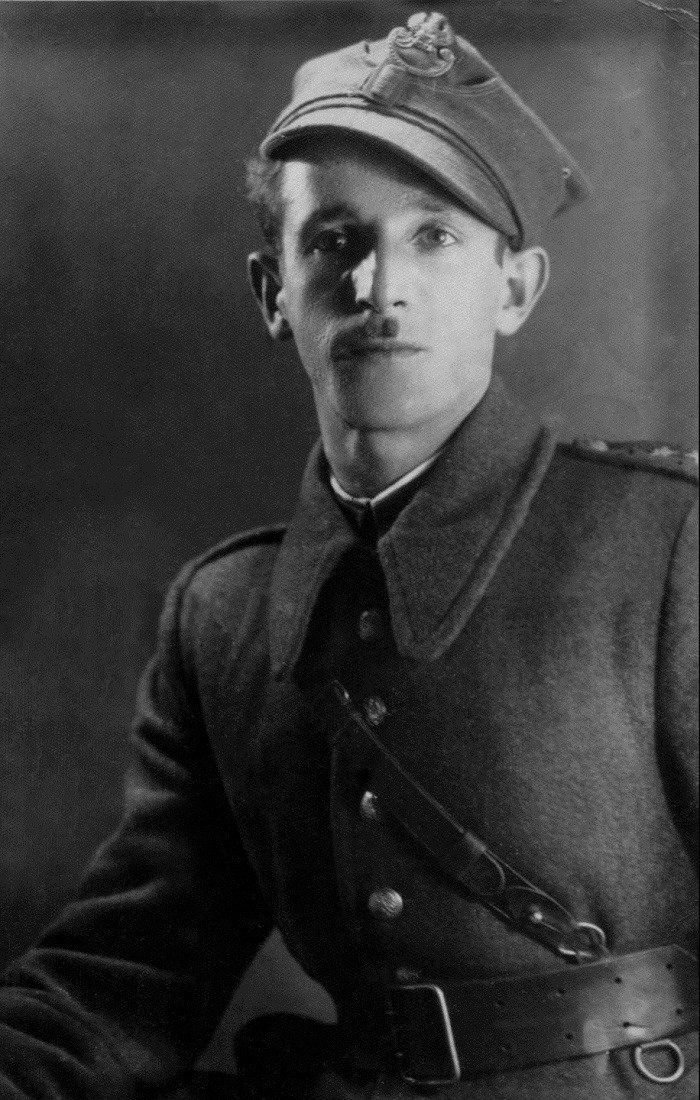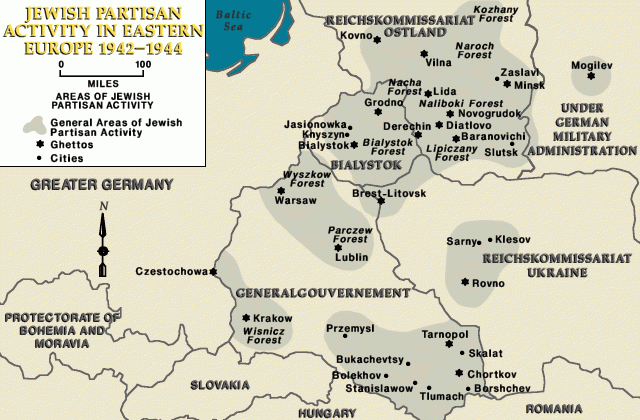
Frank Bleichman
Despite great obstacles, Jews throughout occupied Europe attempted armed resistance against the Germans and their Axis partners. They faced overwhelming odds and desperate scenarios, including lack of weapons and training, operating in hostile zones, parting from family members, and facing an ever-present Nazi terror. Yet thousands resisted by joining or forming partisan units. Among them was Frank Bleichman.
A Project of the Miles Lerman Center
Frank Bleichman (also spelled Blaichman) was born in Kamionka, Poland (near Lublin) on December 11, 1922. His grandmother owned a grocery story and his father was a grain merchant. He was sixteen years old upon the German invasion of Poland in September 1939.
Although German officials issued decrees that limited Jewish travel outside of Kamionka and required Jews to identify themselves by wearing armbands, Bleichman took a number of risks in order to help his parents and six brothers and sisters. He rode his bicycle from the neighboring farms and villages to Lubartow (6 miles east) and Lublin (12 miles south) where he bought and sold goods like honey, chickens, butters, grains, meat, tobacco, yarns, and sugar. Bleichman spoke Polish fluently and was able to travel among the population without being recognized as a Jew (he refused to wear the Star of David armband and traveled without the necessary permits). He was assigned to work two days a week on a nearby estate with crops, but instead he paid someone to fill his place and continued to engage in underground trading.
In October 1942, the Kamionka Jewish council (Judenrat) informed the Jewish residents that they would be resettled in the Lubartow ghetto. Bleichman slipped out of Kamionka and went to a gentile farmer who offered him assistance. He later learned that the Jews of Kamionka had not been relocated to the Lubartow ghetto; they were deported on trains to an unknown destination. Bleichman heard that a group of Jews was hiding in the forest, so after two days with the farmer, he made his way to the forest and found more than one hundred Jews living in an encampment of small bunkers in the forest. He realized that the group was in constant danger both from the Germans and from Poles who threatened them and occasionally attacked them. Bleichman encouraged the group to form a defense unit to guard the camp even though they had no firearms. In December 1942 the group managed to acquire firearms from a local Polish farmer

Over time, Bleichman's unit increased in size. They were joined by refugees from Markuszow and expanded to sixty fighters. In the spring of 1943, Bleichman encountered Samuel Gruber. Gruber's group consisted of men who had fought with the Polish Army and knew how to use explosives and mines. The two groups joined together and became a more effective fighting force. By September 1943, the Polish People's Army realized that the Bleichman and Gruber groups could be a dependable ally in the fight against the Germans and provided them with supplies that had been parachuted in by the Soviet air force. Now equipped with hand grenades, explosives, land mines, machine guns, and ammunition, the group could be even more successful in fighting the Germans.
In 1944, Bleichman's group received an order from the People's Army to move east and join forces with another Jewish partisan unit in the Parczew area commaned by Yechiel Greenshpan. Gruber was appointed deputy commander and Bleichman, at the age of 21, became the unit's youngest platoon commander. In July 1944, the Soviet Red Army advanced from the east and entered the Parczew forest. The German tanks and troops retreated.
After the war, Bleichman married Cesia Pomeranc, who had also lived in the Parczew area, and six years later they settled in the United States.
Critical Thinking Questions
What obstacles and limitations did Jews face when considering resistance?
What pressures and motivations may have influenced Frank Bleichman's decisions and actions? Are these factors unique to this history or universal?
How can societies, communities, and individuals reinforce and strengthen the willingness to stand up for others?

